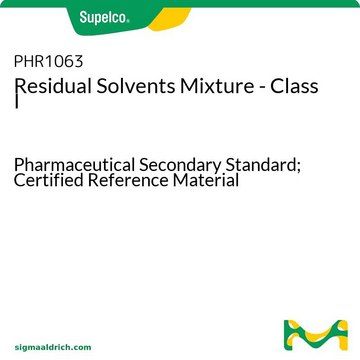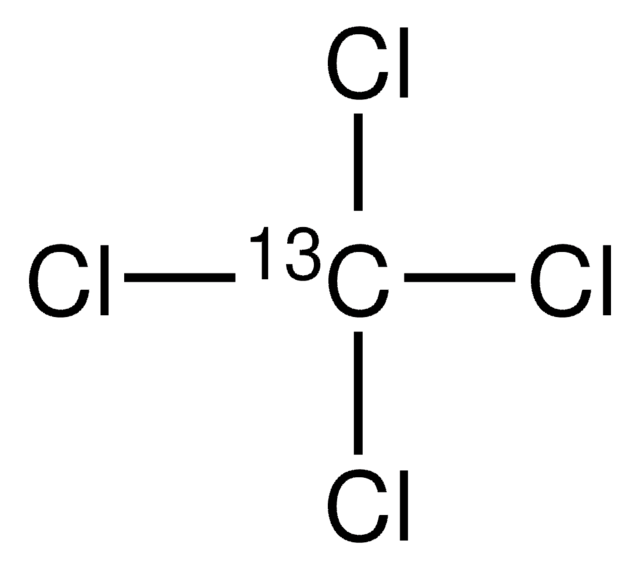02671
Carbon tetrachloride
analytical standard
Sinónimos:
Tetrachloromethane
About This Item
Productos recomendados
grado
analytical standard
Nivel de calidad
densidad de vapor
5.32 (vs air)
presión de vapor
143 mmHg ( 30 °C)
91 mmHg ( 20 °C)
Ensayo
≥99.95% (GC)
caducidad
limited shelf life, expiry date on the label
técnicas
HPLC: suitable
gas chromatography (GC): suitable
índice de refracción
n20/D 1.460 (lit.)
n20/D 1.460
bp
76-77 °C (lit.)
mp
−23 °C (lit.)
densidad
1.594 g/mL at 25 °C (lit.)
aplicaciones
agriculture
cleaning products
cosmetics
environmental
food and beverages
personal care
Formato
neat
cadena SMILES
ClC(Cl)(Cl)Cl
InChI
1S/CCl4/c2-1(3,4)5
Clave InChI
VZGDMQKNWNREIO-UHFFFAOYSA-N
¿Está buscando productos similares? Visita Guía de comparación de productos
Descripción general
Aplicación
Otras notas
Palabra de señalización
Danger
Frases de peligro
Consejos de prudencia
Clasificaciones de peligro
Acute Tox. 3 Dermal - Acute Tox. 3 Inhalation - Acute Tox. 3 Oral - Aquatic Chronic 3 - Carc. 2 - Ozone 1 - Skin Sens. 1B - STOT RE 1 Inhalation
Órganos de actuación
Liver,Kidney
Código de clase de almacenamiento
6.1B - Non-combustible acute toxic Cat. 1 and 2 / very toxic hazardous materials
Clase de riesgo para el agua (WGK)
WGK 3
Punto de inflamabilidad (°F)
Not applicable
Punto de inflamabilidad (°C)
Not applicable
Equipo de protección personal
Eyeshields, Faceshields, Gloves, type ABEK (EN14387) respirator filter
Elija entre una de las versiones más recientes:
¿Ya tiene este producto?
Encuentre la documentación para los productos que ha comprado recientemente en la Biblioteca de documentos.
Los clientes también vieron
Protocolos
US EPA Method TO-17: GC Analysis of Volatiles on VOCOL® after Collection/Desorption using Air Toxics Tube
US EPA Method 8260: GC Analysis of Volatiles on SPB®-624 after Purge & Trap using "K" Trap, Fast GC Analysis
Nuestro equipo de científicos tiene experiencia en todas las áreas de investigación: Ciencias de la vida, Ciencia de los materiales, Síntesis química, Cromatografía, Analítica y muchas otras.
Póngase en contacto con el Servicio técnico









